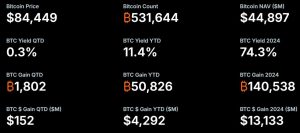In early May, the collapse of the Terra-LUNA ecosystem brought a wave of distrust for algorithmic stablecoins in general.
Given the distrust, other algorithmic stablecoins are arming themselves now, making changes in their operational designs to quell the rising doubts. But more importantly, the stablecoins are trying to avoid the woes faced by TerraUSD (UST).
On June 5, TRON announced that its stablecoin USDD is overcollateralized at 218%. Tron further guaranteed a minimum collateral ratio of 130% at all times. The TRON DAO currently shows reserves of $835.9 million, comprising of Bitcoin (BTC), Tether (USDT), and TRON’s TRX token.
TRON founder Justin Sun said in the announcement:
“Spearheading the Stablecoin 3.0 era, the upgraded, over-collateralized USDD will add more diversified features to underpin its stability. The $10 billion reserves pledged by the TDR will enable USDD to become the most reliable decentralized stablecoin with the highest collateral ratio in blockchain history. Currently, the 200%+ collateral ratio offers USDD a very strong safety net.”
While this might appear reassuring to investors, a fatal flaw has been pointed out by an executive of Proximity Labs, who goes by the Twitter handle ‘resdegen.’ Proximity Labs is a research and development firm targeting the Near Protocol.
In a Twitter thread, resdegen claims that TRON’s claim of USDD being over collateralized at over 200% is “technically FALSE.”
1/ This is nuts@usddio @trondaoreserve & @trondao are deceiving the market with $USDD
They are claiming that $USDD is collateralized at over 200% and this information is technically FALSE
I’m gonna explain why
pic.twitter.com/jPkMp0y2LE
— Res ® (@resdegen) June 5, 2022
In simple words, the collateral ratio of a stablecoin is the ratio of the collateral to the issued stablecoins. Therefore, USDD’s collateral ratio can be calculated as follows:
[USDD collateral (reserves)/ total supply of USDD]*100 = [835.9 million/ 667 million]*100 = 125.32%
So how did TRON conclude that USDD is overcollateralized at over 200%? That’s what resdegen delved into in his thread. He wrote in explanation:
4/ Well, they are considering the 8.29B $TRX burnt as collateral!
Let’s review the math then
Reserves + 8.29B $TRX burnt (= $USDD supply) = $787M + $667M = $1.454B
Then Collat. Ratio = 1.454 / 0.667 = 218%
Voilà! pic.twitter.com/W9v7hOJLOd
— Res ® (@resdegen) June 5, 2022
USDD, like the UST stablecoin, can be minted by burning TRX (LUNA in the case of UST). The TRX tokens burned to mint USDD are being calculated as part of the collateral backing the USDD supply. The math also supports resdegen’s claims.
[USDD reserves + burnt TRX / total supply of USDD]*100= [835.9 million + 667 million / 667 million]*100 = 225%
The result is equal to the collateral ratio displayed on the TRON DAO Reserve’s website at the time of writing. It could be a slippery slope for USDD if the price of TRX starts to fall, resdegen points out.
The risk is compounded by the fact that TRON has TRX as one of the collateral currencies backing USDD, resdegen said. He wrote:
6/ “Well, they have other reserves…” ha! let’s explore that as well
Reserves = 13,040 $BTC + 240M $USDT + 1.9B $TRX
Are you kidding me?
You didn’t have enough with claiming $TRX burnt is collateral. You also had to add it to the “Reserves”
— Res ® (@resdegen) June 5, 2022
He drew parallels with UST’s mechanism, which also had LUNA, among other cryptocurrencies, as collateral.
At the time of writing, TRON’s reserves consisted of $440.9 million worth of Bitcoin, $240 million worth of USDT, and $157.4 million worth of TRX. These values show that over 18% of the TRON Reserves are made up of TRX.
According to resdegen, however, the real collateral ratio of USDD should be calculated without considering the TRX in reserves as well as the burnt TRX. If the collateral ratio is calculated without the TRX reserves, USDD will be collateralized at approximately 81% at press time.
According to resdegen’s argument, TRX should not be included in the reserve calculations since its price is fundamentally linked to USDD maintaining its peg. He explained:
11/ If it goes down enough so that $BTC + $USDT + $TRX < Total $USDD then you have a problem and $USDD would depeg
So if $TRX price goes up, all good. If $TRX price goes down, not that good. Does that remind you of something?
— Res ® (@resdegen) June 5, 2022
Taunting the similarities with the Terra tokenomics, in which UST’s maintenance of peg depended on LUNA price going up, resdegen is sounding an alarm bell against USDD.
The ecosystem may not altogether accept the argument for removing TRX from TRON’s Reserves. However, resdegen might be right that adding tokens slated to be burned while calculating USDD’s collateral ratio appears to be misleading.
The post TRON’s claims of USDD over-collateralization may have hidden worms appeared first on CryptoSlate.























